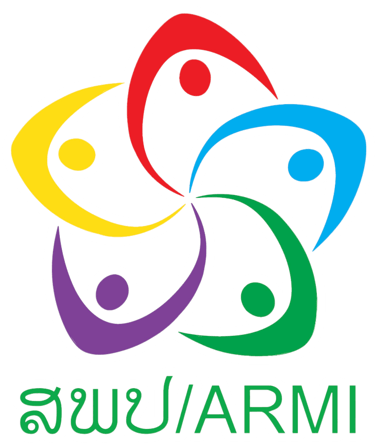Project's Completed
Hong Hien Ban Hao Project
Atsaphone, Savannakhet
Community Based Inclusive Development Project
Kaisone city, Savannakhet and Xamneua, Houaphanh
The Expansion of Clean water and Nutrition infrastructure project in 3 district, Savannakhet Province
To mitigate, respond to, prevent and control the epidemic of COVID 19, in Luang Prabang
Capacity Building for Civil Society Organization and Community under FLEGT-VPA in Bokeo, Sayabouly and Savannakhet
Participatory Community Development for Livelihoods Improvement and Nutrition Promotion in Rural Areas in Savannakhet and Sekong
The Non-Timber Forest Products Program (NTFP)
in Dak Chung District, Sekong Province
Community Based Inclusive Development Project
Xayphouthong, Savannakhet
three district in Savannakhet Province
Laos COVID-19 Vaccine Support
Promote vulnerable students to access to basic education
in Phonxay District, Luang Prabang Province
Strengthening on the Implementation of the Lao National Nutrition Strategy Project
in Xiengkhouang, Bolikhamxay and Vientiane Province
Agriculture Learning Station of Kang Kia Community
in Bachiengchalernsouk district, Cgampasak Province
1
2
3
4
5
6
7
8
9
10
11
12
Improved Cookstoves Programme Lao PDR
in Chomphet district, Luang Prabang Province
Community Based Inclusive Development Project
Participatory Community Development for Livelihoods Improvement and Nutrition Promotion in Rural Areas in Sekong Province
Foresty Law Enforcement Governance and Trade Voluntary Partnership Agreement (FLEGT VPA)
Laos Maternal Child Health and Nutrition
Integrated Agriculture through Chemical Free Waste Production
Service Inclusion for Persons with Disabilities
in Samouay District, Salavan Province
The Capacity building on Enhancing Resilience to Forest Fire and Local Livelihood and Market Linkage in Champasak Province
1
2
3
4
5
6
7
8
9
Lamam and dakcheung district, Sekong Province
in Bachieng Chaleunsouk, Champasak province
the Okard Capacity Strengthening on Disability Inclusive Development Project
in Sanvannakhet and Sekong province
Project's Completed
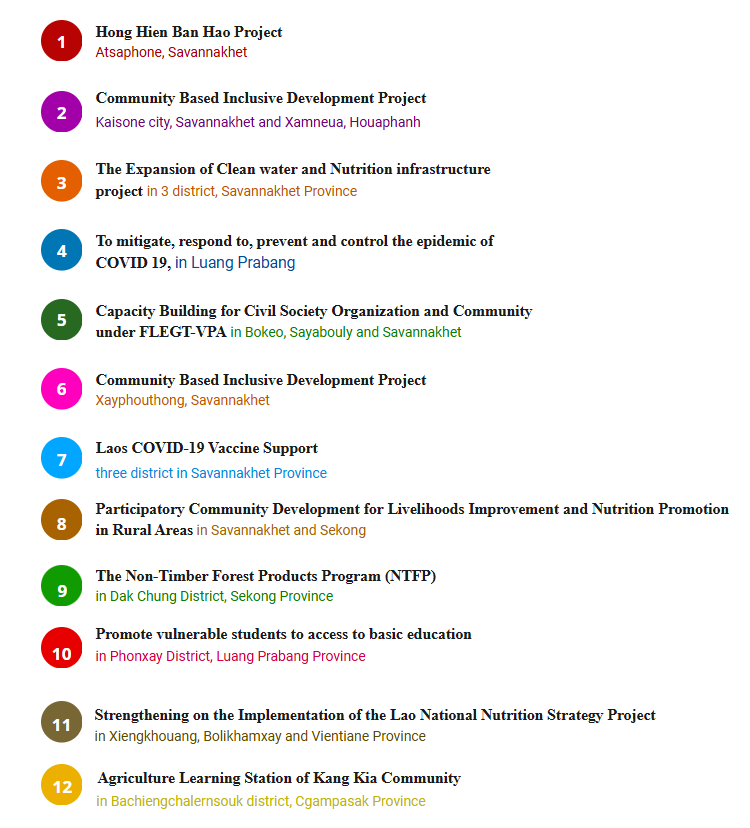

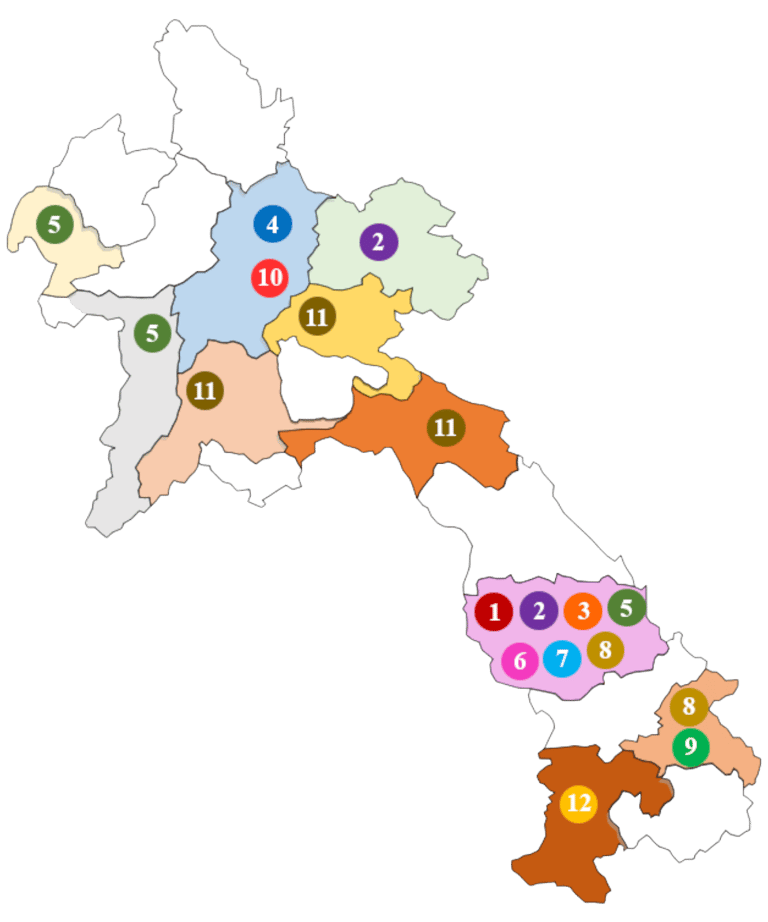

Hong Hien Ban Hao development project
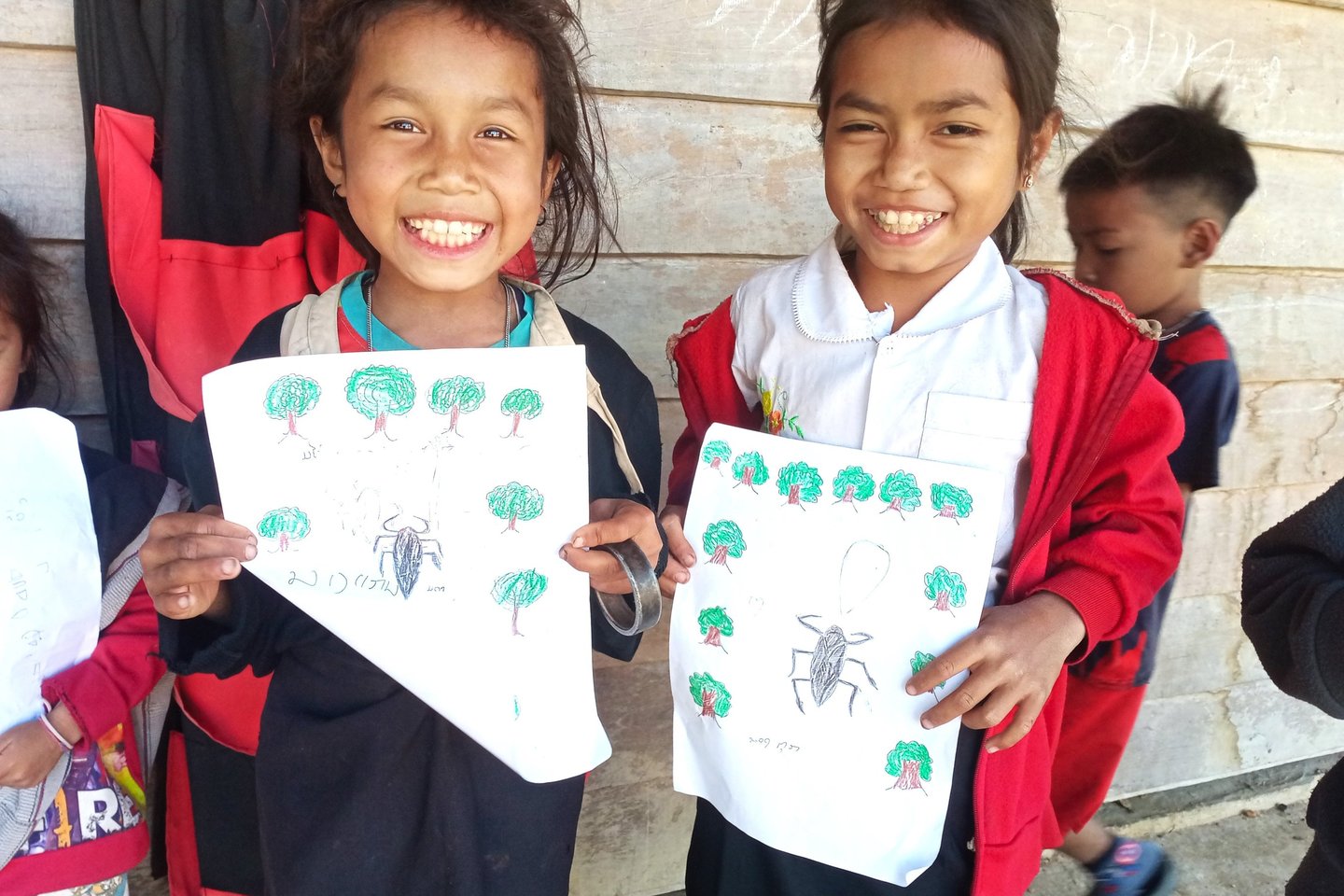

Information about Hong Hien Ban Hao development project
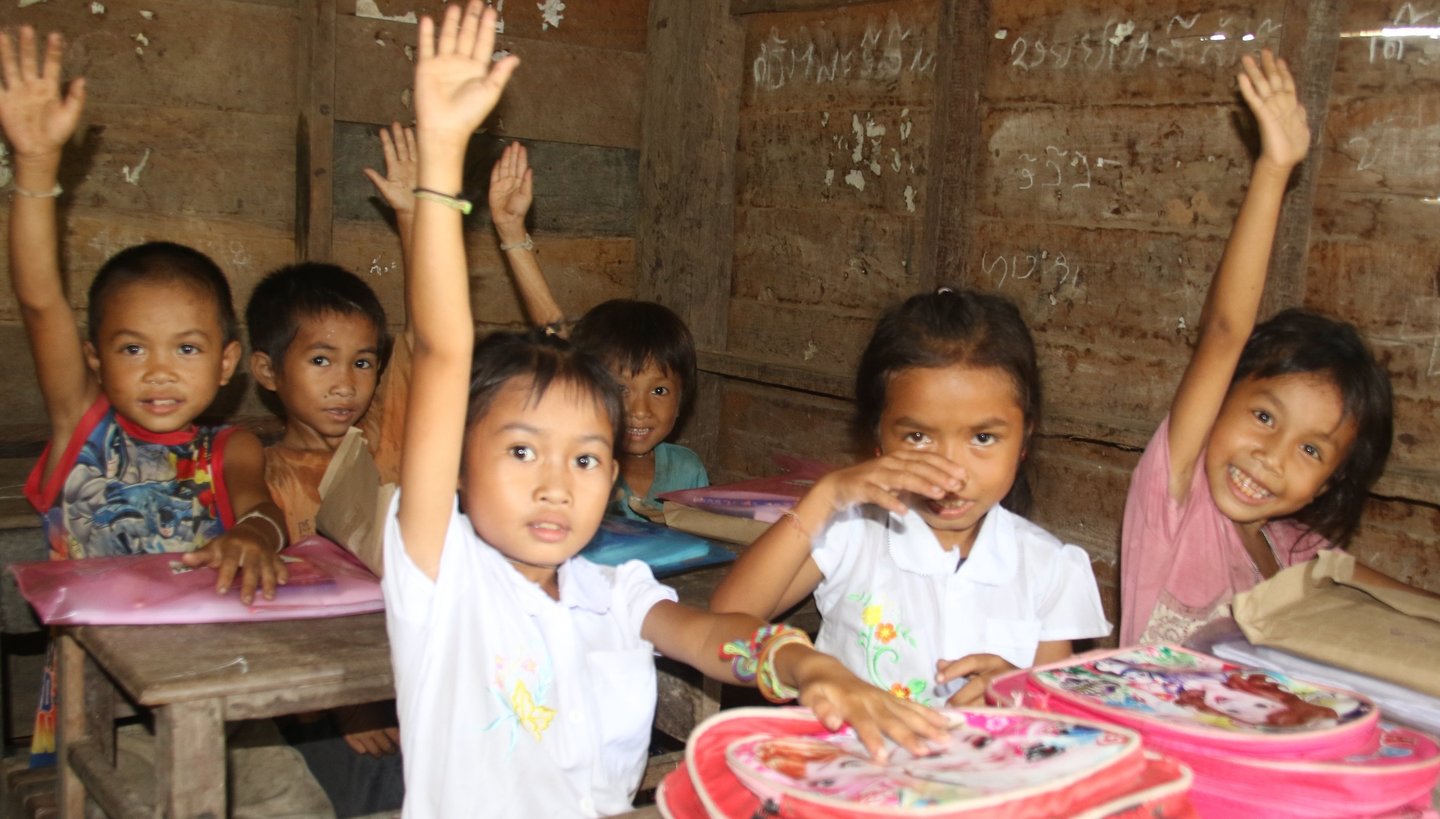

Our Hong Hien Ban Hao development project is one of the projects of the Association for Rural Mobilization and Improvement (ARMI), which has been implemented in 12 target schools in Adsaphone District, Savannakhet Province. The project was funded by the Switzerland Co-operation Organization, worth 120,720 US dollars, which has a project implementation period starting from June 25, 2020 - March 31, 2022, in collaboration with the Ministry of Education and Sports, represented by the Department of Education and Sports of Savannakhet Province.
Our village school development project (HBH) is a project that supported and contributed to the implementation of SDG 4 sustainable development goals, namely: ensuring equal and universal quality education and promoting life-long learning opportunities for all and contributing to the 9th Five-Year National Socio-economic Development Plan that is in line with the 2nd goal as well as the 2nd focus work plan to improve the quality of education at all levels either to create conditions for access to education in order to be ready to integrate with the region and internationally in supporting the industry 4.0.
Our Hong Hien Ban Hao development project is one of the projects of the Association for Rural Mobilization and Improvement (ARMI), which has been implemented in 12 target schools in Adsaphone District, Savannakhet Province. The project was funded by the Switzerland Co-operation Organization, worth 120,720 US dollars, which has a project implementation period starting from June 25, 2020 - March 31, 2022, in collaboration with the Ministry of Education and Sports, represented by the Department of Education and Sports of Savannakhet Province.
Our village school development project (HBH) is a project that supported and contributed to the implementation of SDG 4 sustainable development goals, namely: ensuring equal and universal quality education and promoting life-long learning opportunities for all and contributing to the 9th Five-Year National Socio-economic Development Plan that is in line with the 2nd goal as well as the 2nd focus work plan to improve the quality of education at all levels either to create conditions for access to education in order to be ready to integrate with the region and internationally in supporting the industry 4.0.

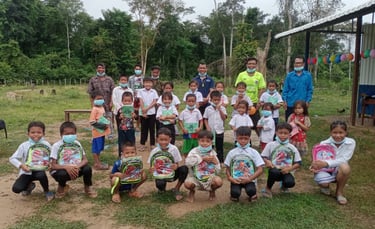
According to the primary data collection before the implementation of the project, it has seen that the number of schools in the target villages of the project still have many things that are insufficient, such as: teaching-learning equipment, classrooms, teachers have not received training in new teaching skills, poor families do not have money to buy clothes and school supplies for their children, and they did not pay attention to see the importance to their children's education. In addition, the implementation of the roles of the village education development board, including the promotion of the education of parents and students, had not been done well.
Therefore, in order to strengthen the capacity, support, promote and solve the above-mentioned problems, the development project of our village school (HBH) has been established. The direct beneficiaries are 622 students and the indirect beneficiaries are teachers, parents, village education development committees and village authorities around 1,000 people.

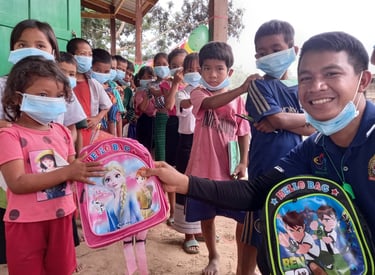
The project has estimated results as follows:
The drop-out rate and class arrears of students at the target school does not exceed 5%.
At least 80% of the teachers at the target schools use the new teaching techniques that have been trained by the project (38 teachers).
At least 50% of the village education development committee of the target school initiates the maintenance and repair of the school with the support of the villagers.
activities

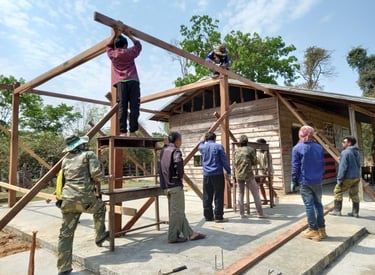
1. Improvement of school facilities
Improve and repair school buildings and desks.
Improve the school grounds.
Build reading room (corner for reading books).
Support learning materials for students.
Support teaching and learning materials.
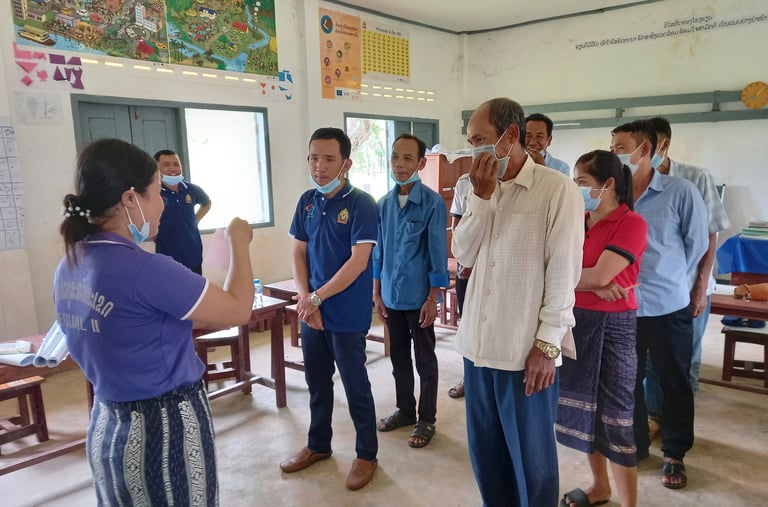

2. Teaching and learning support
Train primary school teachers
Provide excellence awards for schools, excellent teacher and volunteer teachers of the year
Celebrate International Children's Day
Changing behavior and training life skills (environmental, health, gender roles, strengthening life skills in cooking, agriculture, traditional knowledge, etc.)

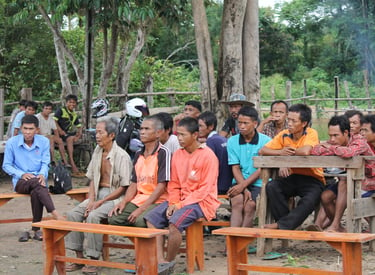
3. Building the educational capacity of the community
Strengthening the Village Education Development Board
Committee meeting
Students’ parents meeting
Improvement of school facilities
Because the target school did not have many facilities that will attract the attention of students to come to school, such as: teaching-learning equipment, dilapidated building, broken desks, not enough bathrooms, some schools do not have a school yard for children to do activities, there is no reading room and the textbook is not enough. In order to contribute and solve the above problems, there are the following activities:

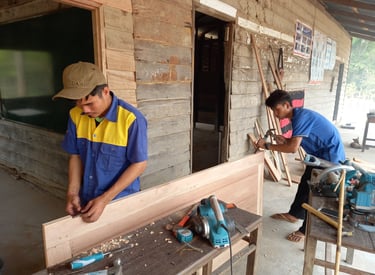
Improve and repair school buildings and desks
This activity was implemented together with partners such as: teachers-students from technical-vocational college in Savannakhet province and parents of students who participated, such as painting the school sign with letters, building a barbed fence around the school, building a flag pole, bulletin information board, bookcase, building a new bathroom, building an additional wooden classroom, providing a new blackboard, demolishing the old school and moving to build a new school using old wood and new wood from the contribution of the village and drilling water bore system.

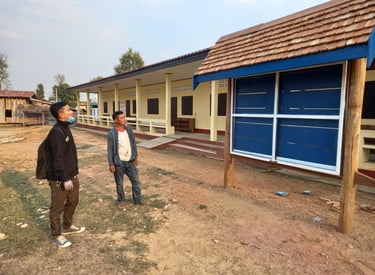
Improve the school grounds
School area improvement activities, project teams have joined with parents, students, village education development board, Vocational Technical College, village technicians to implement school area improvement activities such as: making toys, the process of making traditional playground equipment (Outdoor playground/wooden swings, Douang dang) and using car tires as a playground.
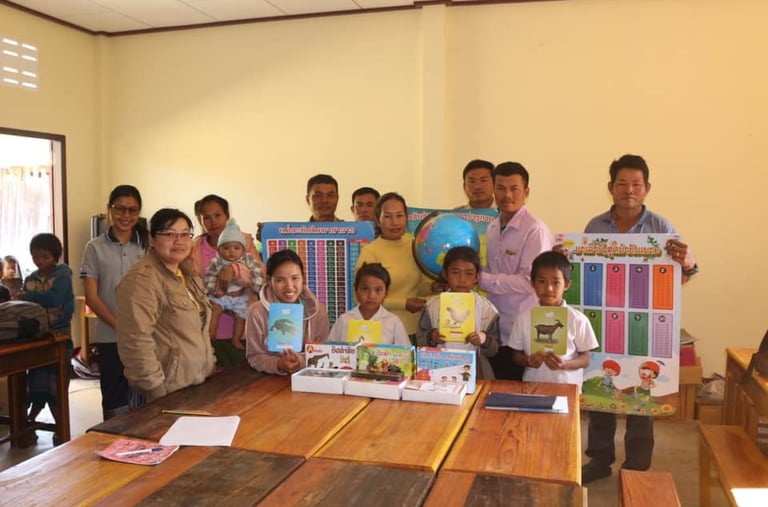

Build reading room/corner for reading books promotion
Project teams have implemented this activity in 10 schools which supported plastic bookshelf, 449 story books, 2 stories each, totaling 1,298 books, providing paper stories, poem-story books that the district technician and project staff have produced simple copies of 7 stories on paper for all 38 teachers to use in storytelling activities for students before starting learning session
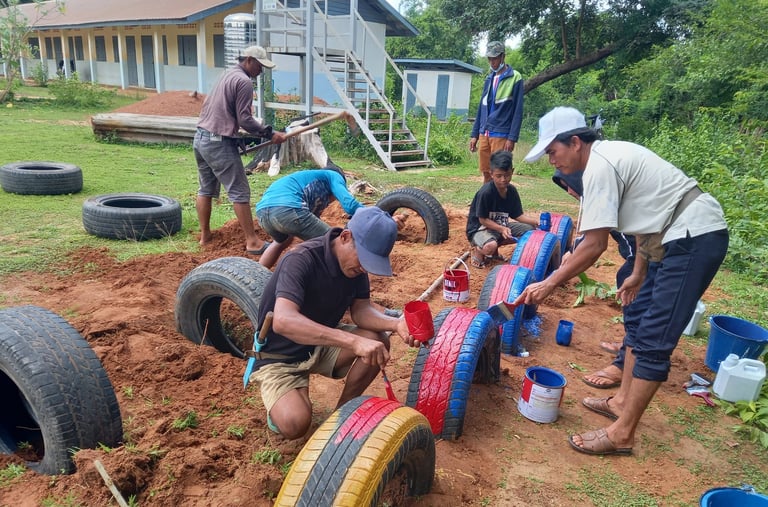

Support learning materials for students
Project supported learning materials for 1,490 students (787 girls) in 12 schools. Among them, there are 306 students from poor families. Support for student equipment includes: schoolbags, notebooks, pens and pencils.
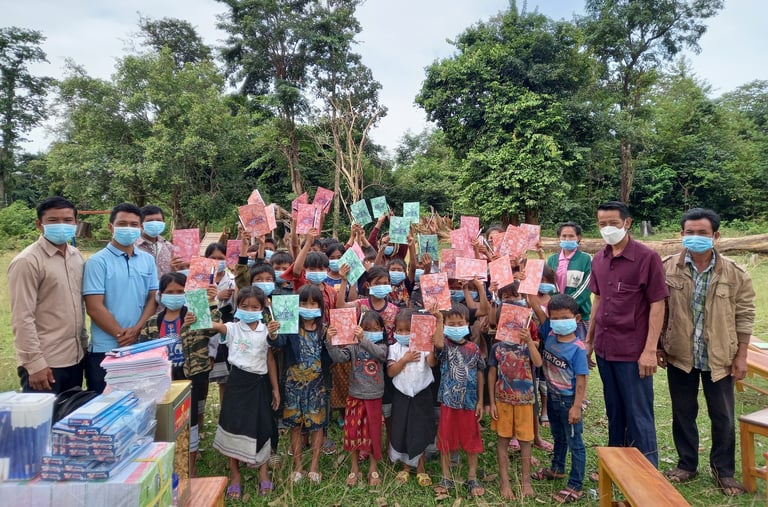

Support equipment and teaching-learning materials
Project have supported teaching-learning materials which included wooden ruler (long, right triangle, equal triangle and angle), abacus, Lao alphabet cards, English alphabet cards, vowel cards, number cards, animal name cards, occupation name cards, fruit name cards, Lao spelling tone posters, human anatomy wording poster (Lao/English), recipes multiplication formula poster, vowel poster in Lao language, map of Laos, world map and simulated earth unit. The direct beneficiaries are 38 teachers and 609 students.
Because of some schools do not have enough teachers, the schools are far away from the teacher's home and the roads are difficult, there is no school dormitory for the teachers to stay which is one of the reasons why they do not come to teach the students regularly and make the students' learning not continuously. Therefore, in order to build capacity and strengthen capacity of teachers and students and to increase the quality of education, the project has to implement the following activities:
Teaching and learning support
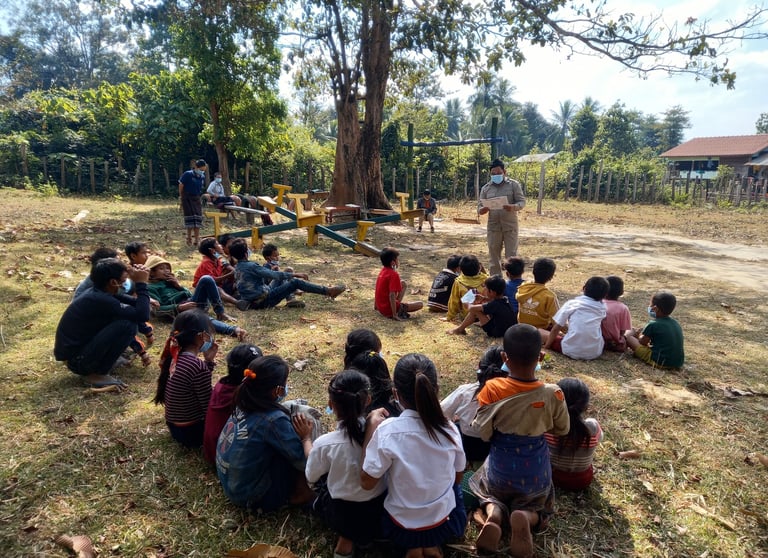

Primary teacher training
The Life Skills Development Association, which is one of the participants in this project, has organized training for technical staff from the Department of Education and Sports, technical staff from the District Education and Sports Office and project staff with a total of 7 topics: Child-centered teaching-learning management, Skills to lead activities and attract children's attention (games, music, drama, stories...), Produce teaching materials by using local culture and objects, Skills in teaching Lao language-mathematics, Learning management – twin classroom teaching technics, Storytelling techniques and work to promote reading in schools, Children's rights and protection of children in schools and communities.
Building the educational capacity of the community
According to the preliminary data collection before the implementation of the project, it was found that the implementation of the role of the village education development board as well as parents and students have not been done well. Thus, the community did not participate and took ownership in the development of education in full process of village education development, with the majority are still relying on programs and assistance from other parties. Therefore, project teams are looking for the better ways to build capacity and strengthen ability of all relevant project partners.
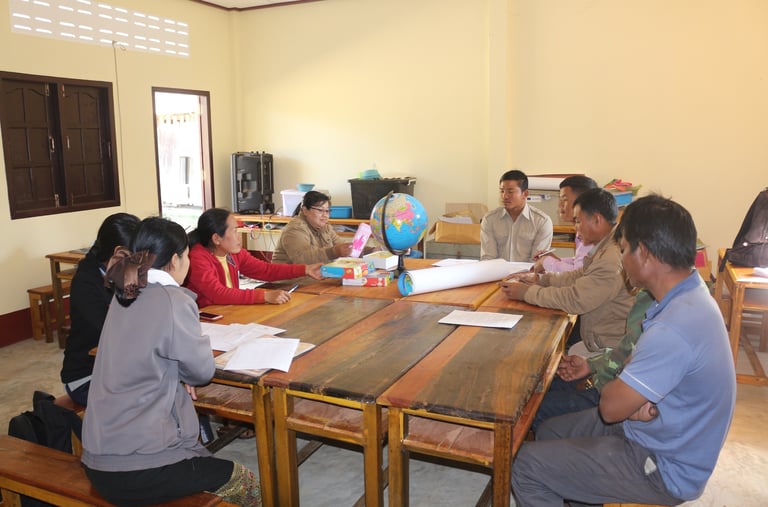

Strengthening the village education development board
Project invited trainers from the Life Skills Development Association to train the relevant project partners on three main topics: Living together in a multicultural way happily, Participatory management of the community, Development of local knowledge subjects. Based on the initial assessment of the training, the participants had seen the process of encouraging and leading the community to create their own school development plan. The participants learned and gathered experience from the model of how to work in order to use knowledge to apply in the next activity.
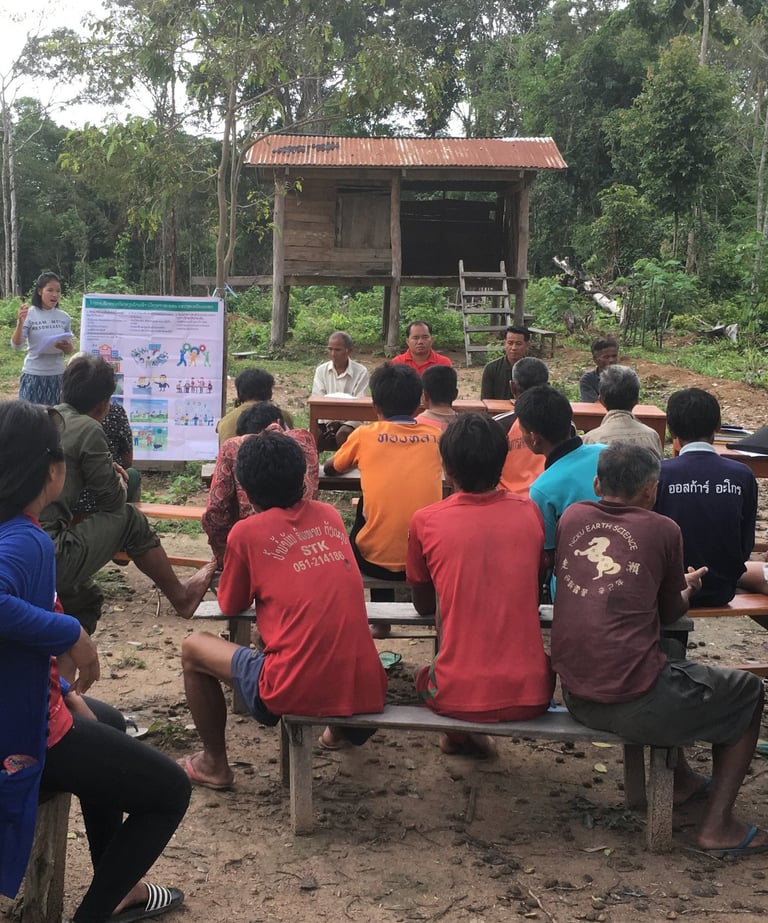

Village Committee meeting
The village meeting was held every year before the school year. In the first year, it was divided into 4 groups. Determined to gather neighboring villages and meet in the same place to jointly plan the development of community education. The participants were from the Village Education Development Board, Parents Association, teachers in 12 target primary schools. The details are as follows: Pha Nomphon complete elementary school with 3 participating villages: Phakkada, Phanomphon and Tat Khadeng; Khantakien Complete Primary School has 4 participating villages: Kham Phou, Hong Muang, Bang Bad Kok and Kantakien. Kangtiew Complete Primary School has 4 participating villages: Tabtao, Dongkhouang, Kangbone and Kangtiew and Kangthong Complete elementary school. The meeting was to discuss about educational issues, find out the solutions and plan for the development of their own village schools. Through the meeting, it was seen that the village development committee and the parents of the students have deeply understanding on the importance of the village school development.

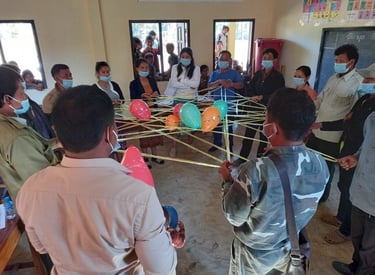
Students’ parents meeting
Parent-student meetings were organized in 12 target villages which has the participation of participants from the Department of Education and Sports, the focus group, all village education development groups, all parents and students’ associations and all school teachers. By exchanging and learning together, in order to be able to apply the good points and apply them in the right way to promote the work of education betters.
Results
The average rate of dropout and arrears of students at the target school in 12 schools is equal to 0.42%, which could exceed the original plan set about the average rate of dropout and arrears of students should be less than 5%.
The average score about 88% from the assessment, teachers in the target schools have used the teaching techniques that have been trained from the project (36 teachers in total) that could be able to perform activities and accomplish beyond the targets (80%).
The Village Education Development Committee have initiated the maintenance and repair of schools with the support of the villagers. The average score is 83% from the random interview of 6 target schools, a total of 30 members of the Village Education Development Committee that could be able to perform their activity plans more than 50% as original planned set.
Vilay Road
House 046/05
Sounantha Village, Kayson city, Savannakhet province
Tel/Fax: 041-252717
E-mail: info@armi.la


